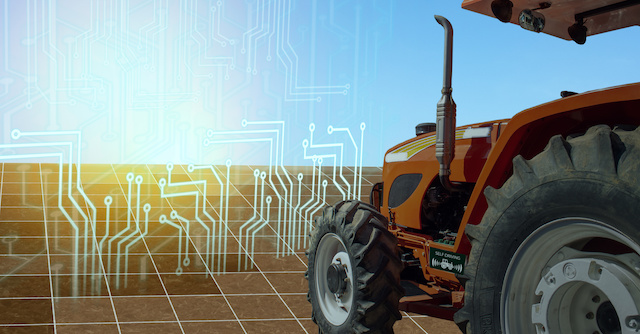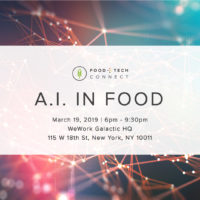
Emerging technologies are transforming how we produce, distribute, and consume what we eat by bringing food to people instead of bringing people to food. A new report by the Refresh Working Group featuring Food Tank, Google, the US Chamber of Commerce, and more than twenty other partners, called Refresh: Food and Tech, from Soil to Supper, highlights more than 20 digital platforms and artificial intelligence algorithms being adopted across the U.S. food supply chain by farmers, distributors, grocers, retailers, and consumers.
Today, AI and machine learning offer the opportunity to bring a greater level of certainty to the notoriously uncertain business of farming. By using the processing power of AI to collect and analyze multiple sources of data out in the field, farmers are working with analytical tools to make decisions and generate predictions about their yields. Craig Ganssle drew upon his military experience in radio and infrastructure systems with the United States Marine Corps to create FARMWAVE, an app that helps farmers identify plant pathogens, bugs, and weeds. It works by integrating with smartphone cameras, drones, machinery, and field sensors: all of the necessary components in creating the connected farm of the future.
FARMWAVE is part of a new generation of apps like PlantVillage and Plantix that use deep learning algorithms to diagnose plant diseases and pests in a matter of seconds, not days or weeks. They will prove critical to addressing food security in the coming decades, for it is estimated that global food production will need to increase 25-70 percent by 2050 in order to nourish a population predicted to reach 9-10 billion in the next thirty years.
The benefits of AI in the food system are not limited to farming. Distributors, grocers, and consumers are also leveraging machine learning tools to improve the way that we buy and eat food—from Shelf Engine’s “predictive ordering” system to Calorie Mama’s visual food journal. Most importantly, emerging technologies are helping to create more equitable food systems.
Wholesome Wave has launched a card-based payment platform that supports an initiative called Wholesome Rx. It utilizes a machine learning algorithm that aggregates data from supermarket loyalty cards to generate coupons for nutritious foods and personalized diet recommendations. This fruit and vegetable prescription program is administered at participating health clinics and used by Medicaid patients who want to eat more fresh produce. The platform captures the entire shopping trip and offers incentives for making healthy food purchases beyond produce.
AI tools are also helping to build the food banks of the future. A new spin on popular home meal kits, Feeding Children Everywhere developed the Fed40 app using AI technology to deliver nutritious meals to food insecure families. By filling out a simple request form, families in need can receive 40 prepackaged, dehydrated red lentil jambalaya and apple pie oats right to their door. The app is especially geared toward working families who might not have the time to trek out to a food bank.
The report makes it clear that our food system is entering a new frontier. AI is becoming part of the infrastructure of the food system. Refresh’s stories and profiles suggest AI might also make it easier for people working all along the food chain to collaborate and innovate together.
Join a conversation on the Refresh report with former Secretary of Agriculture Tom Vilsack and members of the Refresh Working Group on Wednesday, December 5th at 5:30 PM CST at https://refreshfoodandtech.com/food-tech-live-stream-with-former-ag-secretary-tom-vilsack-on-12-5/. Learn more about the Refresh report and the Refresh Working Group at www.refreshfoodandtech.com.
______________________
About The Author:

Sarah Papazoglakis is a Client & Content Manager with Swell Creative Group, an award winning creative agency that helps companies and causes solve the world’s biggest problems. For the past 15 years, Sarah has been working at the intersection of storytelling and social action. At Swell, she blends research and analysis with writing, community outreach, and issue advocacy to curate media and public debates at the center and periphery of the tech sector. Sarah has a PhD in Literature from the University of California, Santa Cruz.





